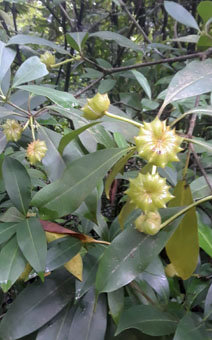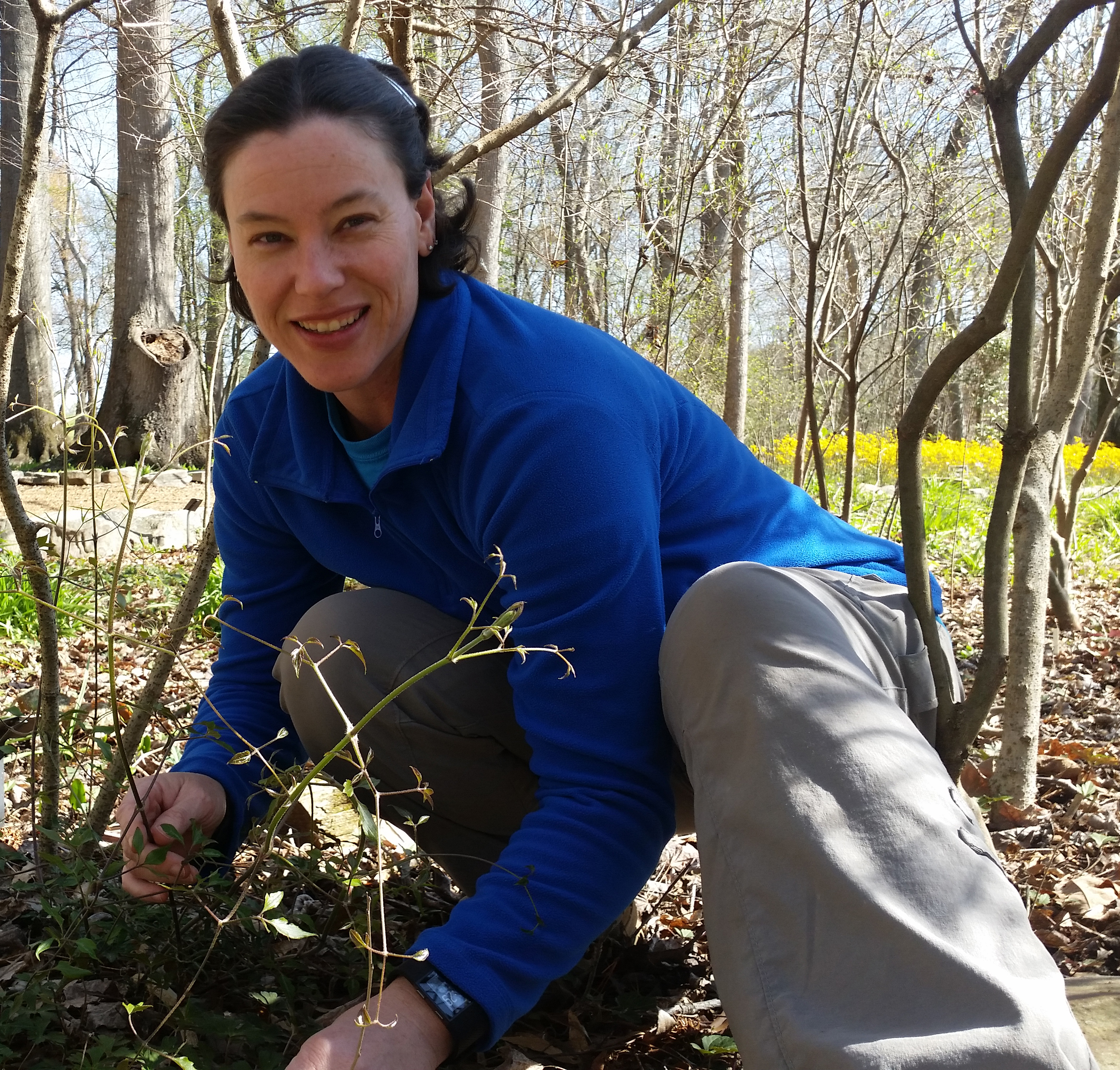Interested in learning more about native plants? Join us for our Native Plants Symposium, September 12-14. Click here for information.

Biodiversity loss
With the prevalence of artificially cheap exotic plants sold to contractors and homeowners from big box stores for decades, gardens and landscapes all over the U.S. have shifted to 80% or more non-native plants in maintained outdoor spaces. Coupled with this is a rise in out-of-control invasive plant species spread by wind, birds, surface runoff (or your neighbor) that are effecting natural areas and gardens alike. The result is a sterile landscape dominated by fewer species that do not support wildlife and actively decrease biodiversity at all levels of the food web. Even if you do not know a Penstemon from a Petunia, do you like fireflies? Monarch butterflies? Enjoy bird watching? All are in peril because the way we have changed the landscape has created food deserts that cannot support them. To slow the momentum of biodiversity loss and possibly reverse the negative consequences that result, knowledgeable gardeners, horticulture experts, and scientists are urging everyone to remove invasive plant species and grow locally sourced native plants from their region. Fortunately, there are many benefits:

Lower maintenance
Because native plants have perfectly adapted to the unique combinations of soil, climate, weather patterns and stresses, they offer year-round interest while requiring far less effort and cost to maintain once established. In fact, if you resist the temptation of ‘improving’ the soil, plant masses rather than individuals, and layer plants that are associated in naturally occurring populations, the assembled planting will establish complex interactions that help the soil retain more moisture making it drought tolerant. After the first year or two, you will be able to manage the vegetation, not maintain it. Picture needing far less weeding, mulch, fertilizer, and irrigation, and much more time to enjoy the garden rather than work in it. This reduces the demand for non-renewable resources and improves water and air quality. Creating gardens with an abundance of different species also makes the planting more resilient, reducing the need for pest or disease control because many are host-specific and cannot spread to non-target species. By using native species to cover the ground and layering them vertically, the planting becomes resistant to invasion by exotic species over time, self-healing any disturbances by recruiting new native plants from the seed bank present in the soil (if you don’t obsessively deadhead).

Benefits to pollinators/insects, birds, wildlife
An ecologically functional landscape offers so much more than a sterile, static landscape. Less than 10% of all insects are harmful to plants. Most insects attracted to our native plants are pollinators, provide food sources for birds, or help control other populations of insects that are undesirable (e.g. flies, fleas, mosquitoes, ticks). It is no coincidence that as our migratory bird populations have steadily dropped 5-10% per year for the last several decades, the balance has shifted to favor insects that cause illness and other problems. The reduction in bird abundance is primarily due to habitat loss. Urbanization and sterile, non-native landscape species cause reductions in the prevalence of native insect species that form the base of the food web for our avian friends. Creating garden spaces with predominantly native plants is critical if songbirds are to find food and shelter and successfully fledge the next generation of baby birds. The National Audubon Society considers each native plant garden created as part of a collective effort to nurture and sustain the living landscape for birds and other animals by providing quality habitat and an abundance (and variety) of insect food choices.
More sustainable
Landscaping with native shrubs, wildflowers, and grasses improves the health of the environment. The goal is not just to replace exotic species with native ones, but to take inspiration from natural plant communities and allow a variety of plants to occupy unique niches (above- and below ground) so that they work together to occupy the soil in ways that conserve and filter water. Especially in urban and suburban communities, the contaminants from surface runoff inevitably end up in our streams and rivers, and ultimately our aquifers and drinking water. The best and least expensive water filter is the soil the water percolates through. Densely growing native plants in relatively undisturbed soil are so effective at removing environmental toxins from water that most municipalities throughout the country now have comprehensive storm water management guidelines that emphasize use of native plants for this purpose. The variety of root structures and mycorrhizal associations inherent in native plant assemblages also provides superior erosion prevention, preserving precious topsoil and preventing siltation of our streams and lakes. Mycorrhizae are symbiotic relationships that form between fungi and plants in the soil. The combined environmental stresses placed on plants in our humid subtropical climate and clay soils is an actually an asset that can be used to deter invasion – our native plants have a competitive advantage when we refuse to amend, till, adjust soil pH, and supply supplemental irrigation. According to the EPA, outdoor water use stresses existing water supplies by contributing to peak demand during summer months. “During these hot, dry times, utilities must increase capacity to meet water needs, sometimes as much as three to four times the amount used during the winter”. The reduction in irrigation needs translates to both water conservation and direct savings on your water bill.

Ecosystem services
Adding native plants to gardens and landscapes has both direct and indirect benefits for people, called ecosystem services. Ecosystem services are defined as the direct and indirect effects of ecosystems that benefit human well-being. They are grouped into four broad categories: provisioning (supplying food and water), regulating (control of climate and disease, supporting (nutrient cycles and oxygen production), and cultural (spiritual and recreational benefits). Native plant species generally have a far greater positive impact on all categories of ecosystem services than exotics because of their unique adaptations to local conditions and fewer unintended consequences than non-native species.
Native plantings can help improve air quality locally and regionally. Ground-level particulates and air pollution from gas-powered vehicles include carbon monoxide (CO), carbon dioxide (CO2), nitrous oxides (NOx), sulfur dioxide (SO2), VOCs (volatile organic compounds) and air toxins such as benzene. Many of these can be drastically reduced (by reducing outputs from maintenance equipment) and ‘recycled’ via sequestration and carbon sinks which effectively removes and stores the compounds in a form that is harmless. Two of the three major natural carbon sinks are plants and soil (the third is oceans). Long-term plantings of native plants play a specific and important role in the global carbon cycle by absorbing carbon dioxide during photosynthesis, storing carbon above- and below ground, and producing oxygen as a by-product of photosynthesis. In this way, native plants contribute to clean air and reduced climate impact.
The use of native wildflowers and grasses in assembled plant communities creates an authentic sense of place increasing our connection to nature and providing a beautiful place for recreation and relaxation. Native plants require less effort and environmental cost than conventional landscaping with non-native plants and have wide-ranging positive benefits for people, wildlife, and the regional environment.

